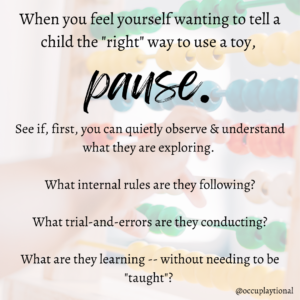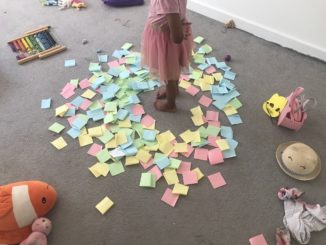
Once you’ve “taught” them how to use something (even accidentally), I notice these things happen:
-they start to believe there is a “right” way to play with the toy
-they fall into a pattern of only wanting to play with it the “right” way
-if the “right” way is tricky, they may want you to do it over and over while they just watch
-only if the toy sticks around for ages, and if you get lucky, will they be as likely to begin to freely experiment with the toy again and learn new ways to use it
-they may instead just get bored of the toy after doing it the “right” way a few times.
Remember, you can always move from less interference to more interference. After they’ve experimented for a long while, you can always jump in and show them some other way to play. But you can’t take back modeling once you’ve provided it.
Many of us jump in immediately because we don’t know how else to interact with our child as they play, which is why I provide these questions. If your first instinct is to want to start directing the play, pause and take a breath. Ask yourself questions instead of asking your child questions. What do you observe? What rules are they following? See if you can understand their mind, get into their logic! What trials are they trying? Why has this caught their interest?



